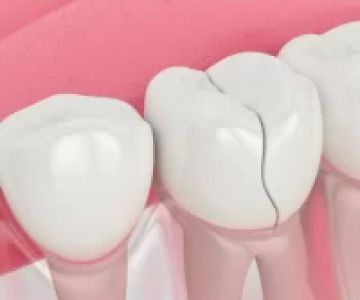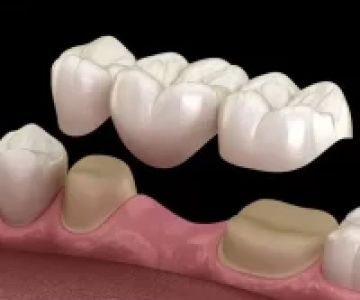How to Restore a Broken Tooth: Essential Tips for Repairing Your Smile
- 1. What Causes a Broken Tooth?
- 2. Steps to Take Immediately After a Broken Tooth
- 3. How to Restore a Broken Tooth
- 4. Different Options for Restoring a Broken Tooth
- 5. Preventing a Broken Tooth in the Future
- 6. When to Visit a Dentist for a Broken Tooth
1. What Causes a Broken Tooth?
A broken tooth can happen to anyone, and the causes can range from accidental trauma to everyday wear and tear. Common causes of a broken tooth include:
- Accidents and Trauma: Sports injuries, falls, or car accidents can lead to broken teeth.
- Chewing Hard Foods: Biting into hard candy, ice, or unpopped popcorn kernels can crack or break a tooth.
- Tooth Decay: Cavities can weaken the tooth, making it more susceptible to breaking.
- Bruxism (Teeth Grinding): Grinding your teeth at night can cause wear and stress, leading to cracks or fractures.
Understanding the cause of a broken tooth is important for determining the best course of action to restore it effectively.
2. Steps to Take Immediately After a Broken Tooth
Dealing with a broken tooth can be painful and stressful, but there are immediate steps you can take to manage the situation:
- Stop the Bleeding: If your tooth is bleeding, gently rinse your mouth with warm water. Apply a clean cloth or gauze to the affected area to control bleeding.
- Save the Tooth Fragments: If possible, collect any broken pieces of the tooth and store them in a container with milk or saliva. This can help your dentist in the restoration process.
- Apply Ice for Swelling: Apply a cold compress or ice pack to the outside of your cheek to reduce swelling and numb the pain.
- Avoid Using the Broken Tooth: Try to avoid chewing on the side of the broken tooth to prevent further damage or pain.
Taking these steps will help reduce pain and protect the tooth while you seek dental care.
3. How to Restore a Broken Tooth
Once the initial shock of breaking a tooth has passed, the next step is restoring it. The method of restoration depends on the severity of the break and the location of the damage. Here's how you can restore a broken tooth:
- Visit Your Dentist: The first step is to make an appointment with your dentist as soon as possible. They will evaluate the damage and recommend the most suitable treatment.
- Dental Bonding: For minor chips or cracks, dental bonding might be used. A composite resin is applied to the broken area, sculpted to match the shape of your tooth, and then hardened with a special light.
- Crowns: If a larger portion of the tooth is broken, a crown may be necessary to restore its appearance and function. Crowns are custom-made and fitted over the damaged tooth.
- Root Canals: If the break exposes the pulp (nerve) of the tooth, a root canal may be required to remove the damaged tissue before the tooth is restored.
- Dental Implants: In cases where the tooth is severely broken and cannot be saved, a dental implant may be recommended to replace the tooth with an artificial one.
Your dentist will provide the best recommendation based on the condition of the tooth and your overall dental health.
4. Different Options for Restoring a Broken Tooth
When it comes to restoring a broken tooth, there are several options, each tailored to the extent of the damage. Here are the most common restoration methods:
- Fillings: For minor cracks or chips that don’t affect the structure of the tooth, a simple filling may suffice. The filling material is bonded to the tooth to restore its shape.
- Porcelain Veneers: In cases where the front of the tooth is damaged but the overall tooth structure is intact, porcelain veneers can be applied to cover the damage and improve the tooth’s appearance.
- Bridges: If a tooth is completely broken off or missing, a dental bridge may be used to bridge the gap with artificial teeth, which are anchored to the adjacent healthy teeth.
- Implants: If the tooth is beyond repair, dental implants offer a long-term solution by replacing the broken tooth with a titanium post and crown.
Each option has its benefits and is chosen based on the severity of the damage, the location of the tooth, and the patient's overall dental health.
5. Preventing a Broken Tooth in the Future
While accidents can happen, there are steps you can take to reduce the risk of breaking a tooth in the future:
- Wear a Mouthguard: If you play sports or grind your teeth at night, wearing a mouthguard can help protect your teeth from trauma and prevent fractures.
- Avoid Hard Foods: Refrain from chewing on ice, hard candy, or unpopped popcorn kernels, as these can put excessive pressure on your teeth and cause them to crack.
- Maintain Good Oral Hygiene: Brushing and flossing regularly helps prevent tooth decay and weak spots that may make your teeth more susceptible to damage.
- Regular Dental Checkups: Visit your dentist regularly to catch early signs of tooth damage, wear, or decay before they become severe.
By following these preventive measures, you can help ensure your teeth remain strong and less prone to injury.
6. When to Visit a Dentist for a Broken Tooth
If you break a tooth, it's important to seek dental care promptly. Even if the break seems minor, visiting a dentist can prevent further complications, such as infections or additional damage. Here are some signs that indicate you should visit a dentist:
- If the break exposes the tooth’s nerve or pulp.
- If you experience severe pain, swelling, or bleeding.
- If the broken tooth makes it difficult to chew or affects your speech.
It’s always better to address tooth issues early on, as the longer you wait, the more complex and costly the restoration process may become.
SEO Title: How to Restore a Broken Tooth: Essential Tips for Repairing Your Smile
SEO Keywords: how to restore a broken tooth, broken tooth restoration, dental care for broken teeth, dental crowns, dental implants
SEO Description: Learn how to restore a broken tooth with essential tips on dental restoration methods like crowns, implants, and bonding. Visit Dentistry Toothtruth for expert dental care and advice on repairing your smile.







 Woodbridge Dental Group and Orthodontics4.0 (265 review)
Woodbridge Dental Group and Orthodontics4.0 (265 review) Village Dentistry4.0 (130 review)
Village Dentistry4.0 (130 review) Gentle Dental Downtown Portland4.0 (123 review)
Gentle Dental Downtown Portland4.0 (123 review) Ossen Stephen M DDS5.0 (4 review)
Ossen Stephen M DDS5.0 (4 review) Nu Smile Aligner5.0 (1 review)
Nu Smile Aligner5.0 (1 review) Smiles Divine Dental4.0 (25 review)
Smiles Divine Dental4.0 (25 review) The Importance of Oral Health Education During Pregnancy for a Healthy Pregnancy
The Importance of Oral Health Education During Pregnancy for a Healthy Pregnancy Best Tips for Brushing Your Teeth Properly for Healthy Gums: Essential Techniques for Oral Health
Best Tips for Brushing Your Teeth Properly for Healthy Gums: Essential Techniques for Oral Health Why Skipping Dental Checkups Can Lead to Bigger Oral Health Problems
Why Skipping Dental Checkups Can Lead to Bigger Oral Health Problems Advantages of Porcelain Dental Restorations
Advantages of Porcelain Dental Restorations How Can Diabetes Cause Tooth and Gum Problems? Preventing and Managing Oral Health Issues
How Can Diabetes Cause Tooth and Gum Problems? Preventing and Managing Oral Health Issues Healthy Habits for Promoting Good Oral Health and Hygiene: Tips for a Healthy Smile
Healthy Habits for Promoting Good Oral Health and Hygiene: Tips for a Healthy Smile